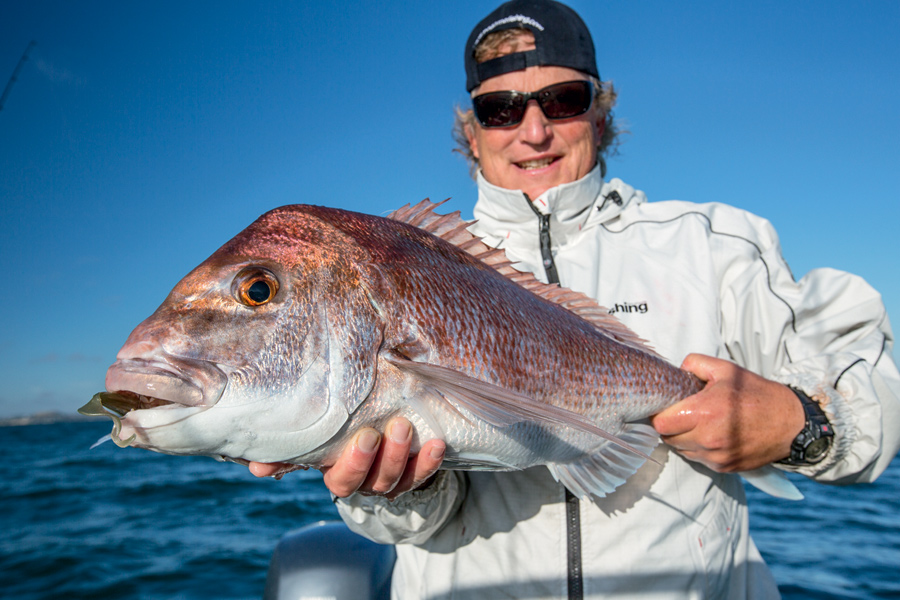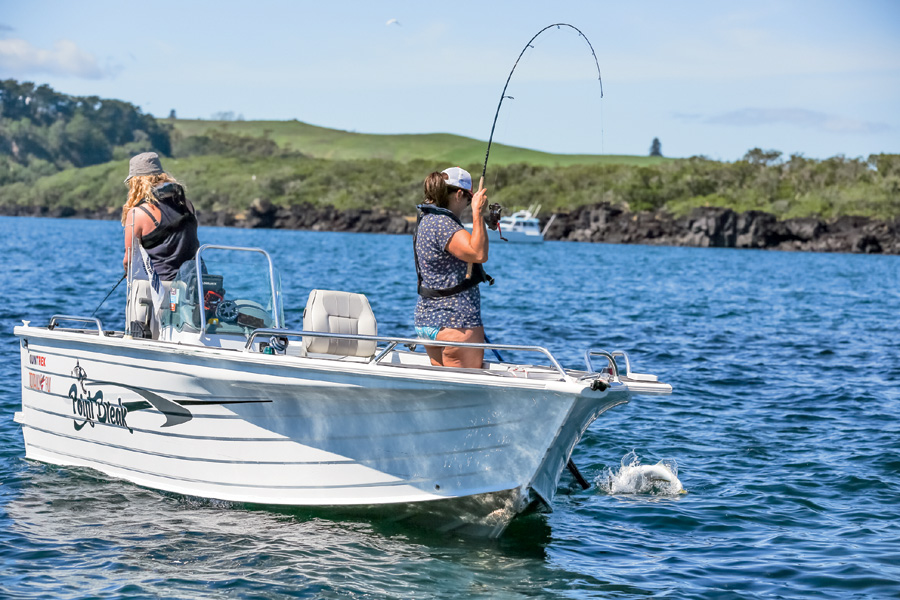Fishing the Hauraki Gulf anchovy run
It’s anchovy time again – those two or three months when a huge area in the Hauraki Gulf holds schools of anchovies.
These schools are spread far and wide at the time of writing, from East Coast Bays to past Kawau Island and across the gulf to the top of Coromandel Peninsula, down into the Firth – and everywhere in between!

I’ve been taking advantage of this seasonal pattern for years and would like to pass on what I’ve learned.
The first thing is that every season is different. For example, while there were masses of skipjack tuna chasing the anchovies last year, this year the tuna have not arrived in the same numbers – yet. Also, the anchovies can school together with pilchards, which should become more abundant soon, and this can change the overall dynamics as well.
These schools can get huge, with the work-ups sometimes lasting for days. So, no doubt about it, now is the time to chase the anchovy!
The biology of the anchovy

According to source ANCHOVY (ANC) 1. FISHERY SUMMARY fs.fish. govt.nz/Doc/21700/03_ANC_09.pdf.ashx:
‘The anchovy found in New Zealand, Engraulis australis (kokowhaawhaa), is primarily a resident of inshore waters such as harbours, gulfs, bays and some large estuaries, and it’s also found all around the Australian coast.
Scientists believe that the NZ species, like its Australian counterpart, comes inshore during spring, then moves further out to sea in the winter. The vertical distribution in the water column is not known, but it seems likely the schools occur throughout the depths between the surface and the coastal seafloor.
Anchovy are planktivorous, feeding mainly on copepods. They form compact schools, particularly during the warmer months, and larger fishes, seabirds, and marine mammals prey heavily upon them. Although they generally form single-species schools, anchovies are closely associated with other small pelagic fishes, particularly pilchards and sprats.
The reproductive cycle is not well known; the main spawning season appears to be spring–summer, but in northern regions spawning may occur through much of the year. Spawning grounds extend from shallow water out to the mid-shelf, and the eggs are pelagic.
No reliable ageing work has been undertaken in New Zealand, but some information is available for this species in Australia, where it matures at one year and reaches 16cm at six years of age. The main size range of the anchovy in north-eastern New Zealand is 8−14cm, which are likely to be two- to five-year-old fish.’
Finding the anchovies
As stated above, the anchovies are holding in vast, spread-out areas of the Hauraki Gulf; the best time to fish them is when they’re being rounded up, concentrating them into ‘meatballs’ or ‘boil-ups’ by predators that include skipjack tuna, kahawai, trevally, kingfish and various marine mammals. Obviously on flatcalm seas it is far easier to find the anchovies, as you can see the birds either sitting on the water or skipping over and into the water feeding on them. Birds will often sit on or near the baitfish to avoid expending unnecessary energy, so don’t drive past these raft-ups. Instead, look around them on your sounder; you could be surprised, as I have been on numerous occasions, at what you see.
As the anchovies get pushed closer into the monster ‘bucket’ we know as the Hauraki Gulf, they become piled up inshore; it’s a great time for recreational boaties, with even the smaller vessels able to take advantage of this seasonal bonanza.

Over the years, usually in March and April, we have had spectacular fishing against Rangitoto Island (just north of the lighthouse), where the anchovies frequently get pushed up onto the rocks by marauding kahawai. At such times the water below us sparkles with scales, as well as bits of anchovy, creating a natural berley trail to attract the snapper, which are also in close taking advantage of the feeding opportunity.
When the ‘boil-ups’ have been going on all day, it can be very rewarding for the bigger specimens at the change of light. This is adrenaline-fuelled fishing at its best; we have caught snapper up to 7kg in 3-5m of water on light soft-bait gear in the past.
We have also left angry, hungry snapper biting, seen other anglers fishing on anchor, maybe 300-500m away, and on the way home asked them how the fishing was, for the reply, “Very slow.”
I believe that the reason for this is that the snapper in the area are drawn into where the anchovies are being rounded up, leaving elsewhere devoid of snapper.
Fishing the anchovies
When fishing the anchovy schools, it is either really difficult or really easy to get snapper and other predators to bite. As we all know, fish can be very finicky at times, so when the fishing is like this, I like to ‘match the hatch’. I find a 3-4” soft-plastic or small jig that looks and moves like an anchovy will entice these tentative, focused feeders.

We had a great time in April-May last year towards the top of the Coromandel (about 4nm west of Fantail Bay) using this tactic for skippies. We would find a boil-up, cast into it with a soft-plastic that looked like an anchovy, point the rod tip to the water and wind fast. This would often end up with a very happy angler holding light gear while the line screamed off the reel at a furious rate.

Other days it does not matter what you drop down into the mayhem: we have often caught the biggest snapper or kingfish on a 100-150g slow-jig that looks nothing like the baitfish present. This just proves what I have always said: you need to try everything at your disposal to see what works at the time. You will never stop learning if you retain an open-minded attitude.
|
|
Fishing Reports Visit Reports
Bream Bay Fishing Report - 18/04/24
Change in seasons, change in tactics Not a lot to report in the ‘big fish’... Read More >
Canterbury Fishing Report - 04/04/24
Fish galore! Coming off the back of Easter Weekend and with some very nice weather... Read More >
Raglan Fishing Report - 04/04/24
Excellent snapper action There is some excellent autumn snapper fishing straight out and up the... Read More >
Bream Bay Fishing Report - 04/04/24
Whangarei Harbour fishing well Like the weather, the fishing has been patchy throughout Bream Bay... Read More >





Comments